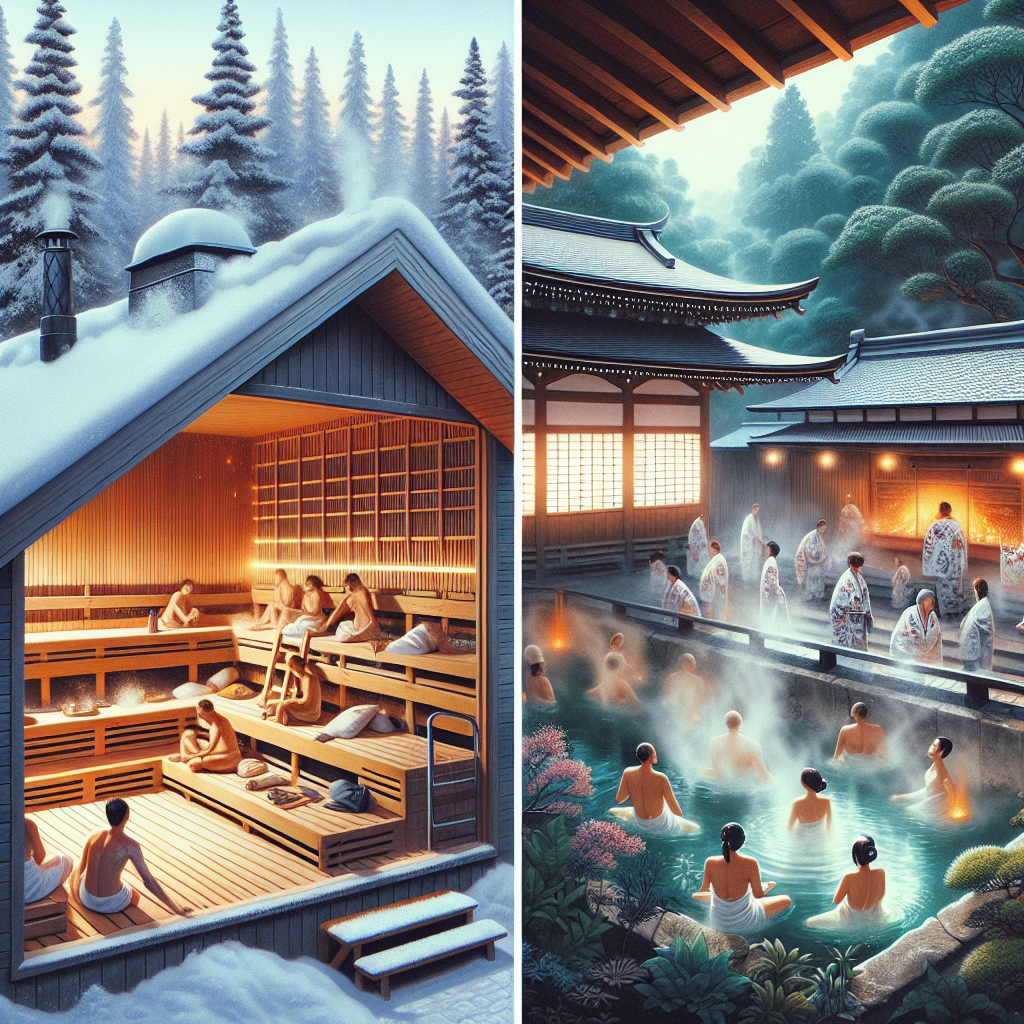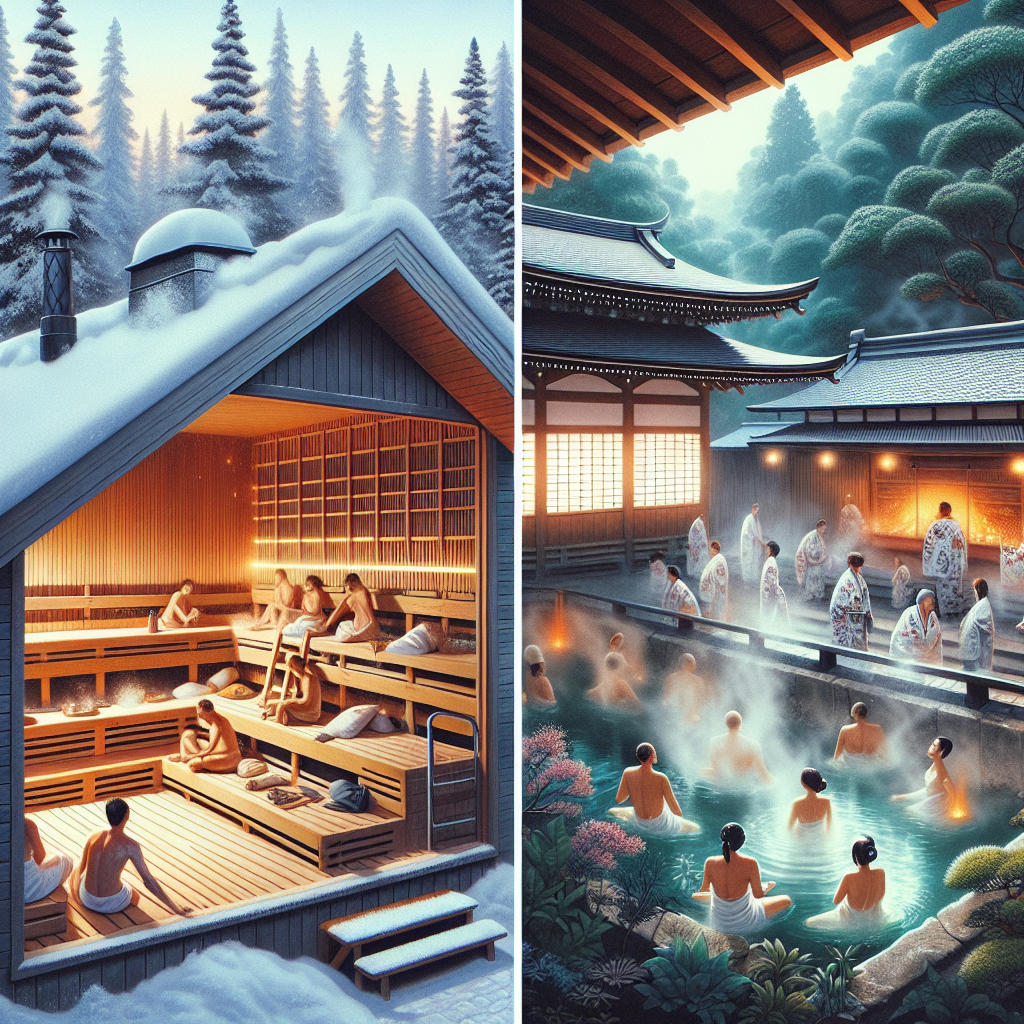Saunas have long been a vital part of various cultures around the world, each with its unique practices and beliefs surrounding the steam-filled chambers. From the communal bathing rituals in Finland, where it is ingrained in their way of life, to the indigenous sweat lodges of Native American tribes, saunas hold significant cultural meanings for communities across the globe. These steamy oases not only serve as a place for relaxation and rejuvenation but also serve as a vital hub for socializing and connecting with others. Join us as we explore the wide array of cultural significances that saunas bring to communities worldwide.
History of Saunas
Ancient Origins of Saunas
Saunas have a long and rich history that can be traced back to ancient civilizations. The origins of saunas can be found in various cultures around the world, each with their own unique traditions and practices.
One of the earliest records of saunas comes from the ancient Mayans and Aztecs in Central America. The Mayans used sweat houses, known as ‘temazcals’, as a form of spiritual and physical cleansing. These sweat houses were built with natural materials and heated by volcanic stones.
In Northern Europe, the Finnish people have been practicing sauna bathing for thousands of years. The Finnish sauna tradition dates back to prehistoric times, and it has become an integral part of their culture. The saunas were originally underground pits or simple huts, and they were used for various purposes such as giving birth, healing, and even as a place for the dead.
The Sauna Tradition in Nordic Countries
Saunas have played a significant role in the Nordic countries, particularly in Finland. The Finnish sauna tradition is deeply ingrained in their culture, and it is seen as a sacred place of relaxation and purification. In fact, Finland is known to have the most saunas per capita in the world.
Saunas in Nordic countries are traditionally built with wood and are heated by burning firewood. The wood-fired saunas provide a gentle and soothing heat that allows for optimal relaxation. Sauna bathing in these countries is often accompanied by rituals such as jumping into a cold lake or rolling in the snow to further enhance the experience.
Saunas in Other Regions
While saunas have a strong cultural significance in Nordic countries, they are also found in various other regions around the world. In Russia, saunas, known as ‘banyas’, have been a part of their culture for centuries. Similar to Finnish saunas, Russian banyas are heated by burning firewood or stove-heated rocks. They are often used for social gatherings, relaxation, and wellness.
Saunas can also be found in Native American cultures. Native Americans have used sweat lodges as a form of spiritual cleansing and healing. Sweat lodge ceremonies involve sitting in a heated sweat lodge, usually made of wood or stone, and undergoing a ritualistic experience of purification and rebirth. These ceremonies are still practiced by many Native American tribes today.
Different Types of Saunas
Smoke Saunas
Smoke saunas, also known as ‘savusaunas’, are one of the oldest types of saunas. These saunas are built without chimneys, and instead, the smoke is allowed to fill the room before being released. The smoke provides a unique aroma and creates a different ambiance compared to other types of saunas. Smoke saunas are commonly found in Northern Europe, particularly in Finland and Estonia.
Steam Saunas
Steam saunas, or ‘wet saunas’, are the most common type of saunas found around the world. They are typically heated by a stove or an electric heater that produces steam by pouring water over heated rocks. The steam creates a humid environment and increases the temperature inside the sauna. These saunas usually have high humidity levels and are often used for relaxation and rejuvenation.
Infrared Saunas
Infrared saunas use infrared lamps to heat the body directly, rather than heating the air. These saunas emit infrared radiation, which penetrates the body’s tissues and produces a soothing and therapeutic heat. Infrared saunas are often preferred for their ability to provide deep tissue penetration, resulting in various health benefits such as pain relief, improved circulation, and detoxification.
Temazcal Saunas
Temazcal saunas, also known as ‘sweat lodges’, have a long history in Native American cultures, particularly in Mexico and Central America. These saunas are typically made of stone or adobe and are heated by hot rocks. The participants sit inside the temazcal and undergo a spiritual and physical cleansing experience. The intense heat and steam create a purifying and transformative atmosphere.

Health Benefits of Saunas
Detoxification
Saunas have long been recognized for their detoxifying properties. As the body sweats, toxins are released through the pores, promoting the elimination of impurities and waste. Sweating in a sauna can help improve the overall detoxification process of the body, leading to a healthier and cleaner system.
Improved Blood Circulation
Sauna bathing can also improve blood circulation. The heat from the sauna causes blood vessels to dilate, increasing blood flow to vital organs and muscles. This improved circulation delivers oxygen and nutrients more efficiently, enhancing overall cardiovascular health.
Stress Relief
Saunas provide a serene and peaceful environment, making them an ideal place for stress relief. The heat and relaxation experienced in a sauna help to reduce tension in muscles and promote the release of endorphins, leaving you feeling calm and rejuvenated.
Enhanced Skin Health
Regular sauna bathing can contribute to healthier skin. The heat and steam open up the pores, allowing for deep cleansing and removal of impurities. Saunas also promote sweating, which helps to remove dead skin cells and improve the skin’s overall texture and appearance.
Social and Community Significance
Saunas as a Gathering Place
Saunas have been a place of socialization and community gathering for centuries. In many cultures, saunas are seen as a communal space where friends and family come together to relax, unwind, and engage in meaningful conversations. Sauna sessions often foster a sense of community and camaraderie, strengthening interpersonal relationships.
Saunas as Traditional Meeting Spaces
In some cultures, saunas have served as traditional meeting spaces for important discussions and decision-making. In Finland, for example, the sauna is considered a sacred place for open and honest conversation. It is believed that the heat and relaxation create an atmosphere of trust and intimacy, making it an ideal setting for resolving conflicts and reaching consensus.
Sauna Etiquette and Rituals
Sauna etiquette and rituals vary across different cultures. In Nordic countries, it is customary to be naked or partially clothed while in the sauna, as it is seen as a symbol of equality and authenticity. However, in other cultures, such as Russia or Native American communities, wearing a towel or clothing is more common. Additionally, certain rituals may be observed, such as pouring water over the rocks to create more steam or using birch branches for a gentle beating, known as ‘whisking’, to enhance the sauna experience.

Religious and Spiritual Significance
Saunas in Native American Cultures
In Native American cultures, saunas have deep religious and spiritual significance. Sweat lodge ceremonies are considered a sacred ritual that connects individuals with the spirit world and promotes harmony and balance within oneself. The intense heat and steam of the sweat lodges are believed to purify the body, mind, and spirit, leading to a greater sense of well-being and spiritual enlightenment.
Sauna Ceremonies in Finland
Finland has a rich tradition of sauna ceremonies that are rooted in spirituality. Sauna ceremonies often involve various rituals and practices, such as washing the body and mind before entering the sauna, and utilizing aromatic herbs and scented oils to enhance the sensory experience. These ceremonies provide a sacred space for introspection, meditation, and self-reflection.
Spiritual Cleansing in Russia’s Banya
In Russia, the banya holds spiritual significance and is often associated with cleansing rituals. Traditional banyas are believed to have purifying properties that not only cleanse the body but also cleanse the spirit. Banya rituals involve the use of birch branches for gentle beating and aromatherapy with essential oils, creating a holistic experience that promotes both physical and spiritual well-being.
Saunas as Therapeutic Spaces
Saunas in Traditional Medicine
Saunas have been utilized in traditional medicine for their therapeutic benefits. In various traditional healing systems, such as Ayurveda and Traditional Chinese Medicine, saunas are considered a powerful tool for detoxification and revitalization. The heat and steam of saunas are believed to balance energy, promote circulation, and stimulate the body’s natural healing processes.
Sauna Therapy for Various Ailments
Sauna therapy, also known as ‘heat therapy’, has been found to be effective in treating a variety of ailments. The heat and steam of saunas can help alleviate symptoms of respiratory conditions, such as asthma and bronchitis, by opening up airways and promoting mucus clearance. Saunas have also shown promise in reducing pain and inflammation, improving sleep quality, and boosting the immune system.
Saunas in Spa and Wellness Industry
Saunas have become an integral part of the spa and wellness industry around the world. Many luxury spas offer a range of sauna experiences, including traditional saunas, steam saunas, and infrared saunas. Sauna sessions are often incorporated into wellness programs and treatments, such as detoxification programs, relaxation therapies, and beauty rituals. The calming and rejuvenating effects of saunas make them a popular choice for those seeking holistic well-being.
Saunas in Architecture and Design
Saunas as Cultural Icons
Saunas have become cultural icons, representing relaxation, self-care, and well-being. The design and architecture of saunas reflect the unique cultural identity and traditions of different regions. From traditional wood-fired saunas in Nordic countries to modern glass saunas in urban settings, saunas have evolved to become architectural masterpieces that blend functionality with aesthetics.
Traditional Sauna Structures
Traditional sauna structures vary depending on the culture and region. Nordic countries often feature standalone saunas made of wood, while Russian banyas are commonly built as part of larger structures. Traditional saunas are designed to withstand extreme temperatures and promote optimal heat circulation, ensuring a comfortable and authentic sauna experience.
Contemporary Sauna Designs
In recent years, contemporary sauna designs have emerged, incorporating innovative materials, technologies, and architectural concepts. From sleek and minimalist designs to extravagant and unconventional structures, contemporary saunas showcase the fusion of tradition and modernity. These designs often prioritize sustainability, energy efficiency, and customized user experiences.
Sauna Culture and Rituals in Finland
Finland’s Sauna Culture
In Finland, saunas are deeply ingrained in the culture and daily life of its people. Finland’s sauna culture is characterized by its emphasis on authenticity, relaxation, and well-being. Sauna sessions are seen as a time for self-reflection, contemplation, and physical and mental rejuvenation. The Finnish sauna culture promotes a healthy work-life balance and appreciates the importance of rest and relaxation.
Löyly: The Spirit of Sauna
Löyly, a Finnish word that translates to “steam,” refers to the spirit and ambiance of the sauna experience. Löyly represents the sacredness and connection between the sauna and its users. The quality of the löyly is an important aspect of the Finnish sauna culture, as it determines the overall atmosphere, heat, humidity, and fragrance of the sauna session. Achieving the perfect löyly is considered an art form and is greatly valued by sauna enthusiasts.
Sauna Competitions in Finland
Sauna competitions are a unique aspect of Finnish sauna culture. These competitions test participants’ endurance and ability to withstand high temperatures. The goal is to see who can remain in the hot sauna for the longest period of time without leaving. Sauna competitors not only demonstrate physical resilience but also mental strength. These competitions not only showcase the passion and dedication of sauna enthusiasts but also serve as a celebration of Finnish sauna traditions.
Sauna Traditions in Indigenous Cultures
Sweat Lodge Ceremonies of Native Americans
Sweat lodge ceremonies have a deep spiritual significance in Native American cultures. These ceremonies are traditionally led by a medicine man or spiritual leader and involve a group of individuals sitting in a small enclosed structure, known as a sweat lodge. The heated rocks in the center of the lodge are symbolically used to represent the Earth’s energy and to cleanse and purify the participants physically, emotionally, and spiritually.
Maori Steam Baths
The Maori people, indigenous to New Zealand, have their own tradition of steam baths called ‘wharepaku’. These steam baths are often built near natural hot springs or geothermal areas. The Maori people believe that the steam and heat from these baths have healing properties and help to cleanse the body and promote overall well-being. The steam baths are often used before or after physical activities and traditional ceremonies.
Russian Banyas and their Traditions
In Russia, banyas have been an integral part of the culture for centuries. Russian banyas are traditionally built with wood and heated by burning firewood or stove-heated rocks. The banya experience often involves rituals such as ‘whisking’ with birch branches and plunging into cold water or rolling in the snow. The banya is seen as a place of purification, relaxation, and socializing, and it holds a special place in Russian culture.
Sauna Influence in Popular Culture
Saunas in Literature and Art
Saunas have been depicted in various forms of literature and art, showcasing their cultural significance and allure. In literature, saunas are often portrayed as places of solace, reflection, and personal transformation. Artists have also captured the essence and ambiance of saunas through paintings, sculptures, and photography, conveying the power of heat, relaxation, and communal rituals associated with sauna bathing.
Saunas in Film and Television
Saunas have made their way into popular culture through films and television shows. Sauna scenes often serve as settings for important conversations, character development, or even comedic moments. From intense and dramatic moments in Scandinavian thrillers to light-hearted scenes in romantic comedies, saunas add depth and authenticity to storytelling, while also showcasing their cultural significance in various contexts.
Sauna-inspired Fashion and Design
Saunas have also influenced the world of fashion and design. From sauna-inspired clothing lines to sauna-inspired architectural structures, the aesthetics and concepts of saunas have found their way into various creative industries. The simplicity, serenity, and elegance associated with saunas have inspired designers to incorporate elements such as wood, warm hues, and cozy textures into their creations, creating a sense of comfort and tranquility.
In conclusion, saunas hold deep cultural significance across the world. From their ancient origins to their modern-day variations, saunas have evolved to become more than just places of heat and steam. They provide spaces for relaxation, socialization, spiritual rituals, and promote health and well-being. Saunas are not only cultural icons but also an integral part of our human experience, bringing people together and connecting us with our ancestral traditions. Whether it is the soothing warmth of a Finnish sauna, the sacredness of a Native American sweat lodge, or the communal traditions of a Russian banya, saunas have left an indelible mark on cultures across the globe.

